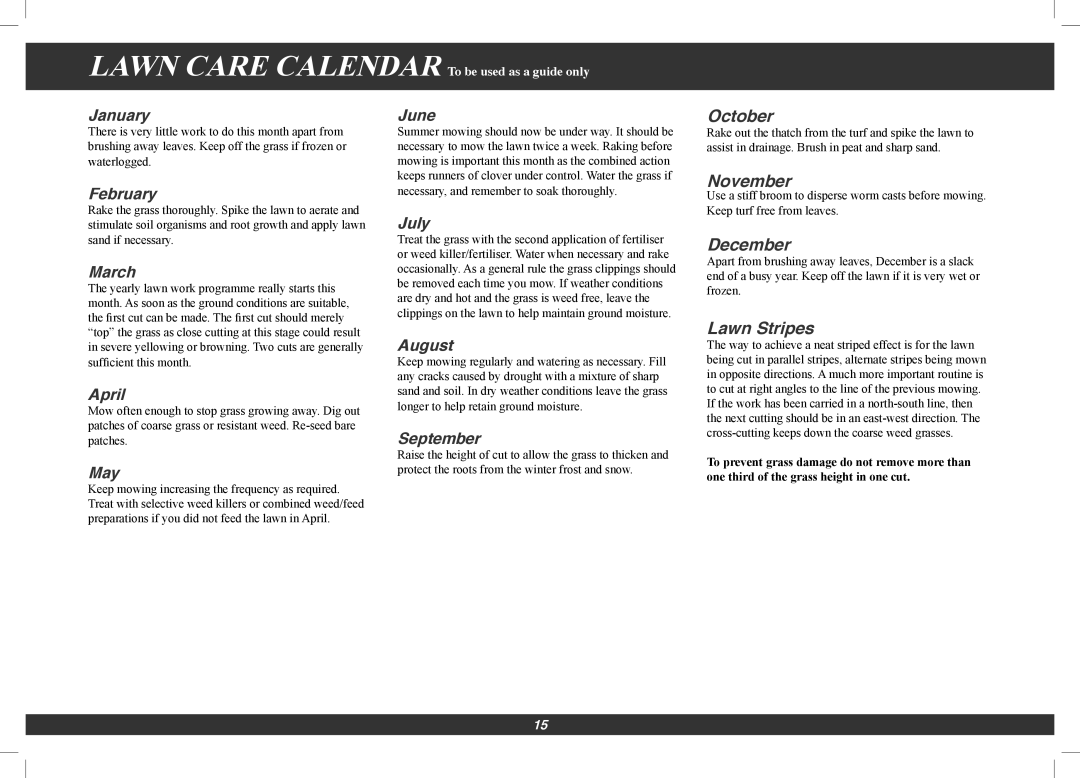560G, 561G specifications
Hayter Mowers, a renowned name in the lawn care industry, has made a significant mark with its latest offerings, the 561G and 560G models. These mowers are designed to meet the needs of both professional landscapers and dedicated homeowners who demand efficiency and performance.One of the standout features of the Hayter 561G and 560G is their cutting technology. Both models are equipped with a powerful engine that ensures robust performance. The cutting deck, built from high-quality materials, enhances durability and ensures longevity. The 561G, in particular, features a 56 cm cutting width, making it ideal for larger gardens. The 560G, with a 53 cm cutting width, is perfect for medium-sized lawns, offering versatile performance.
Both models come with Hayter’s patented variable speed technology. This feature allows users to adjust the mower's speed according to the terrain and grass conditions. Whether tackling thick growth or mowing through lighter grass, the user can ensure the job is done efficiently without straining the mower's engine. This adaptability not only enhances the overall mowing experience but also extends the mower's lifespan.
The construction of the 561G and 560G showcases Hayter’s commitment to quality. They feature a robust steel deck that resists wear and tear, and their wheels are designed for superior traction, allowing for smooth maneuverability across uneven surfaces. Additionally, the adjustable cutting heights provide flexibility, enabling users to achieve their desired lawn finish.
Another remarkable characteristic of these mowers is their ease of use and maintenance. The ergonomic design ensures comfort during operation, reducing fatigue on extended mowing sessions. Furthermore, both models have easy access to the engine and cutting deck, making routine maintenance simple and straightforward.
Hayter also emphasizes environmental responsibility with the 561G and 560G by incorporating fuel-efficient engines that minimize emissions. This commitment to sustainability appeals to eco-conscious consumers who are looking to maintain their lawns without compromising environmental values.
In summary, the Hayter Mowers 561G and 560G are equipped with advanced features, robust construction, and eco-friendly technologies that set them apart in the competitive mower market. Whether you're maintaining a small yard or a larger landscape, these models deliver exceptional reliability, performance, and comfort, making them a deserving addition to any gardener’s toolkit.

